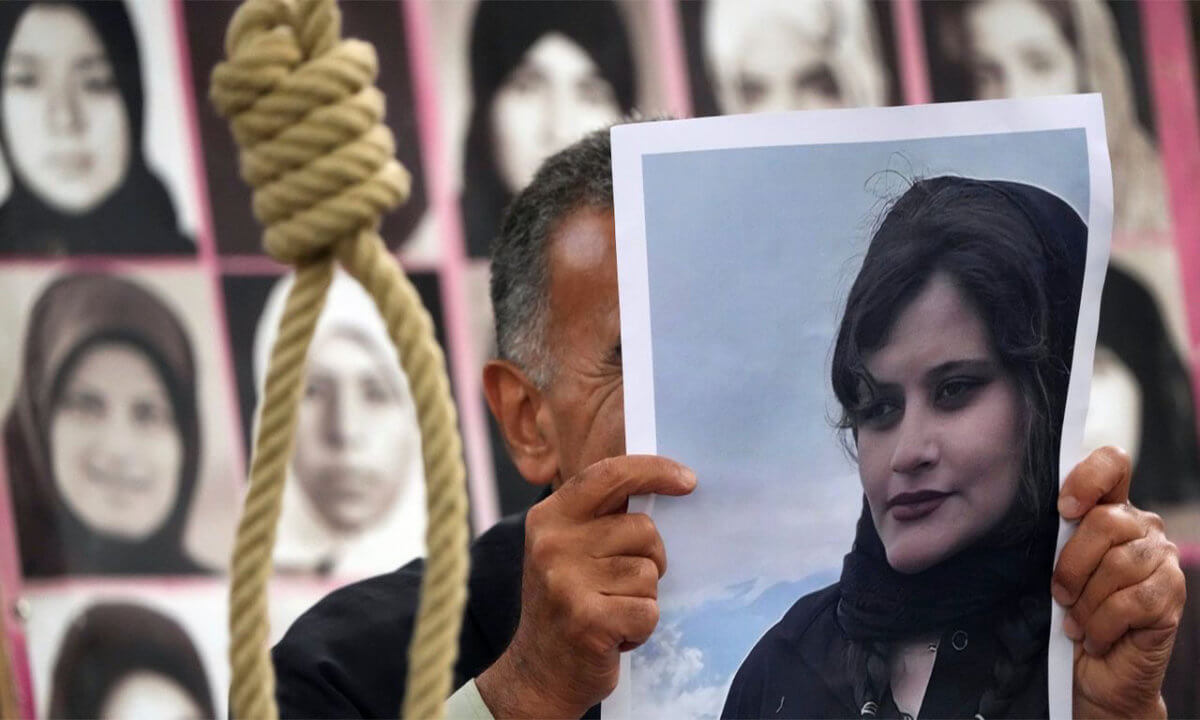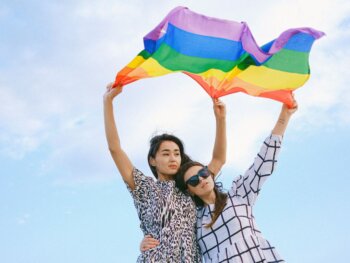She was on a trip to see family and it was during a visit to a local market when she was approached by Iran’s notorious Guidance Patrol, a vice squad of the Law Enforcement Command of Islamic Republic of Iran. The Patrol also known as the “Morality Police” noticed that a small section of her hair was exposed under the mandatory hijab that she donned. The 22-year-old was arrested under the guise of educating her on proper hijab wear, beaten in the military van and died in custody. This led to the global outcry since her death on September 16th, reaching over 151 countries by this weekend alone. This shocking death of Mahsa Amini has brought to the forefront the issue of Iran’s religious zealots, the hijab’s place in Islam in the context of women’s rights, and whether this international outrage (the biggest revolution seen in decades) will shift the ground from which Iran’s extremely ideology stands. We take a closer look.
The History Of The Morality Police
It was the Iranian revolution of 1979 helmed by Ayatollah Khomeini where the societal pendulum swung to the other end. Inviting extremist ideology into the fold with the main staple being the focus on women’s attire. It was economic collapse, accusations of corruption and the general feeling of loss felt by the young Iranian population of that time, which lifted Khomeini to power. Along with that came the adoption of extreme religious ideology most evidenced by the national declaration that women should be dressed in modest wear specifically wearing the hijab or a full body coverage in the form of a chador.
As per the Iran’s Islamic Penal Code, “Women, who appear in public places and roads without wearing an Islamic hijab, shall be sentenced to ten days to two months’ imprisonment or a fine of fifty thousand to five hundred [thousand] Rials,” (Article 638). The article also authorizes a sentence of “two months in prison or up to 74 lashes” for “[anyone] who openly commits a harām (sinful) act, in addition to the punishment provided for the act.” According to United Against Nuclear Iran, The severe devaluation of the Rial has reduced the impact of the fine, which translated to about $1.20–12 as of October 3, 2022).
At that time there wasn’t an official policing taking place, instead Iranian citizens just took it upon themselves to monitor and report back to the local police if such wardrobe violations took place. Such neo-military actions morphed into the Iranian government in the early 1990s after the Iran-Iraq war forming an official arm of the Iranian law enforcement branch called Guidance Patrol (where as the name would suggest, they are looking to provide “guidance” on proper Islamic dress code). Guidance Patrol is otherwise known as the morality police.
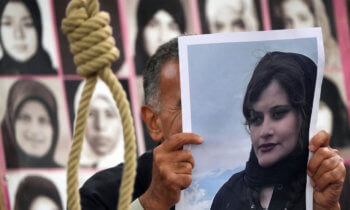
The Monitoring Of The Hijab
The idea of regulation womenswear with headscarves in the Islamic Republic seemed to be a subject of various debate within the country. In December 2017, Tehran’s police chief, Gen. Hossein Rahimi ordered the police to stop harassing, fining and arresting women for violating the mandated dress code. However the idea that the hijab was still mandatory provoked other forms of protest within the Islamic Republic.
Later in December, women protesting the mandatory hijab would participate in White Wednesdays where white hijabs would be donned in a silent protest. In December 2017 through January of 2018, women protested by taking off their hijab, tying it to a branch and waving it in the air. It started with Vida Movahed, a 31-year-old mother, who in Tehran decided to climb up an electrical box and wave her white hijab. The street was Enqelab (revolution) Avenue. Weeks later other women across the country would repeat that gesture, earning the nickname “Girls of Revolution Street”. Some were arrested and released while others were kept at bay.
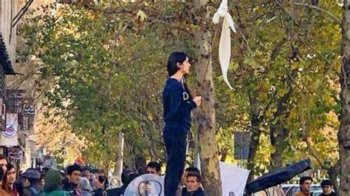
In response to the protest, Gen. Hossein Rahimi then reversed his order, reverting back to the official police stance of arresting, detaining women issuing with zero-tolerance. “Although the sentence for not wearing a hijab [head-covering] is two months in prison, anyone encouraging others to take off their hijab will be jailed for 10 years.” He publicly stated.
Fast forward five years and Mahsa would not return home, and her name would be uttered across borders and across oceans.
One of the interesting and frankly, sad biproducts is the politization of the hijab. The fact that women across the world freely don the religious headscarf is not what should be the focus of the ire. It’s the control, regulation and the outright forcing of women should wear the hijab in the guise of culture & religion. That is the extreme ideology which threatens the lifelihood of women. Social media has become a petrie dish of anti-hijab sentiments, where others had to be specific in their support for Mahsa Amini that it’s not against the free-will of women who wear the hijab, but it’s actually in protest of the Iranian government’s violence towards their citizens who don’t abide by the rule. Mahsa wore her hijab, but because of a few hairs being visible, she lost her life. And that brutal violence and the criminalization of women is at the core of the protest.
The Global Protests
It has been decades since Iran has seen public protests in the tens to hundreds of thousands en masse. Numerous cities across the country has been ground zero for men, women and children, all showing their support for Mahsa and their vitriol for their government. What’s different from the past protests that have been suppressed by the Iranian officials? Chalk it up to generational differences. In Iran the protests are driven by Gen Y and Gen Z who are armed with social media, even though the government did shut down the internet intermittently. These protesters are different. More defiant. This time around they are much savvier, much more fearless and definitely louder.
My dad was there in 1979 marching against the mandatory hijab alongside his sister & cousins. He's 70 now. How sad it is that still the same cruelty & enforcement exists in his home country. RIP to all that have been lost to this. #MahsaAmini #Iran pic.twitter.com/4l10oIMTn4
— 𝖘𝖒𝖆𝖑𝖑 𝖕𝖆𝖑𝖆𝖓𝖌 🩷 | پلنگ کوچولو🐈 (@smallpalang) October 6, 2022
The Iranian government who recently accused the United States for provoking these protests have not backed down. According to a Norway organization, Iran Human Rights since the protests started in Iran a couple of weeks ago, approximately 154 protesters including nine children were killed in the country including numerous “disappearances”. The most recent being the killing of 16-year-old Nika Shakarami who while at one of the protests was separated from her friends and chased down by security guards. She taken into custody with her body found in a morgue 10 days later. The official word is that she died from falling “from a great height”. In a cruel move, the government officials stole her from the morgue and buried her at an undisclosed location in order to avoid it from being the site of another protest. All while her family was waiting for her to be delivered home.
These tweets below show that not only was Nika a victim, but there were others. And it’s just heartbreaking.
She was full of life
Her name is Nika Shakarami. She was only 17.
Nika joined #IranProtests on Sept 20. Ten days later her family was asked to go to Kahrizak prison to get her body. The authorities didn’t allow the family to have a funeral for her while arresting her aunt & uncle pic.twitter.com/oYcqVzcztZ— Nafiseh Kohnavard (@nafisehkBBC) October 4, 2022
Sharif university, one of the most prestigious universities in Iran has been under siege for the last hours. security agents have been beating up and arresting students en masse. Students have been sending out messages on internet requesting help. Be their voice #MahsaAmini
— M. Ali Kadivar محمدعلی کدیور (@MAliKadivar) October 2, 2022
https://twitter.com/AlinejadMasih/status/1578126784159170560
Translation of the tweet below: This is #SarinaEsmaeilzadeh, a 16-year-old girl who was killed on Sep 23 in Karaj as a result of baton blows from the thugs of the Islamic Republic. In this video, she speaks about the pain of living under the IRI…
This is #SarinaEsmaeilzadeh, a 16-year-old girl who was killed on Sep 23 in Karaj as a result of baton blows from the thugs of the Islamic Republic. In this video, she speaks about the pain of living under the IRI… RIP.#MahsaAmini #سارینا_اسماعیل_زاده pic.twitter.com/edVUvOEQc9
— Omid Memarian (@Omid_M) October 6, 2022
Protests erupted in over 150 countries as per last count this past weekend. One of the most striking gesture in support is the cutting of hair. Countless illustrations flooded social while celebrities and political officials in France have been actively cutting their hair to show their support.
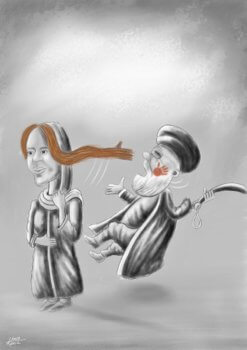
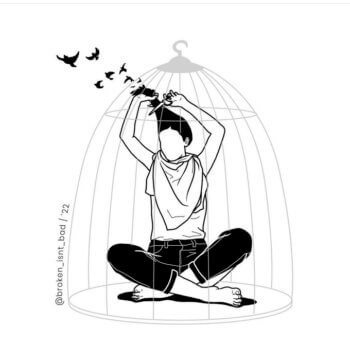
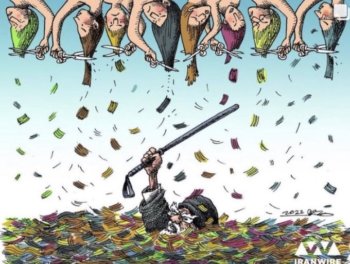
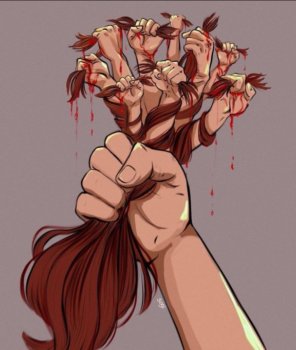
One of the most interesting perspectives coming out of this, is the fact that having western (white) women (as mentioned above), cutting their hair is just performative. An empty gesture. Various activists have pointed out that Western (white) countries need to take a closer look at their own foreign policies to be more effective, enduring and meaningful. Focus in on how they as a nation do business with other regimes that suppress women’s human rights, which includes countries in addition to Iran. A wider net must be cast. Another argument is that the patriarchy that exists in the western (white) world needs to be addressed with reference to the current abortion debate in the United States. It’s the white savior mentality that seem to pop it’s ugly head. Western countries need to flex their power just a bit more to truly make a difference and come across more authentic than just showing off their glistening scissors.
We the women of Iran don’t need Western politicians to just cut their hair, we want them to cut their ties with our murderers. This is what real solidarity looks like.
I told @FRANCE24.
Many teenagers got killed for the crime of protesting the murder of #MahsaAmini.#مهسا_امینی pic.twitter.com/vI7noIkq9l
— Masih Alinejad 🏳️ (@AlinejadMasih) October 6, 2022
So, will this global outcry make a difference? I believe that protests (and their related social media posts, videos and hashtags), definitely grab the attention of the media. Which in turn, spreads the awareness to the masses. And that is necessary. Will that awareness spark empathy? Of course it will. Will it work? It’s honestly hard to say. Arab Spring brought down Qaddafi. Who’s to say that it won’t happen again? It is clear that the Gen Y and Gen Z protesters in Iran are a much different generation when it comes to activism. As mentioned earlier, they are more connected and more defiant and to be honest some are willing to martyr themselves for the cause. Will their voices make that change?
I hope.
#WomenLifeFreedom.
Hina P. Ansari
Author
Hina P. Ansari is a graduate from The University of Western Ontario (London, Ontario). Since then she has carved a successful career in Canada's national fashion-publishing world as the Entertainment/Photo Editor at FLARE Magazine, Canada's national fashion magazine. She was the first South Asian in...


















































